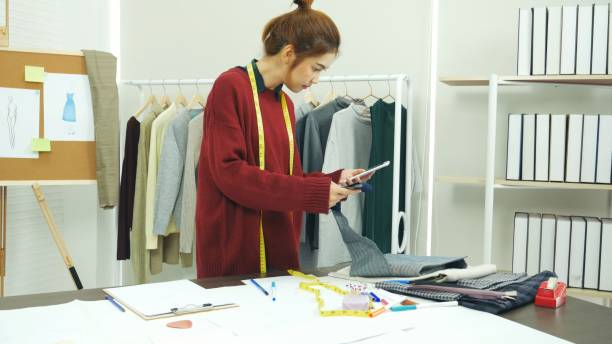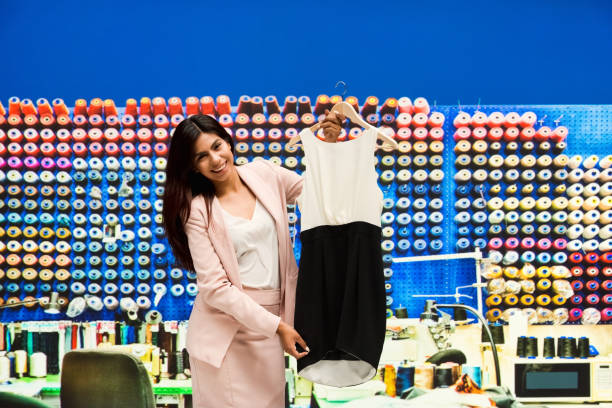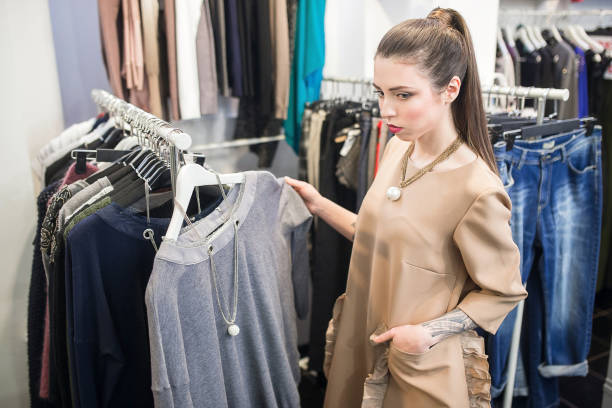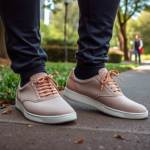What Does a Merchandiser Do in Fashion

When you walk into any high-street fashion store, every garment on the shelf is there thanks to the nuanced and detailed work of a fashion merchandiser. Often working behind the scenes, these professionals are instrumental in bringing the latest fashions to retail stores and ultimately to the consumer. Fashion merchandising involves a blend of fashion sense and business expertise, as merchandisers must anticipate trends, ensure products meet consumer demand, and drive sales. Whether it’s deciding which designs will be stocked for the season or arranging the layout for maximum impact, merchandisers ensure that a brand’s vision is translated into viable products that resonate with their target market.
The Multifaceted Realm of a Fashion Merchandiser
At its core, the role of a fashion merchandiser is to bridge the gap between the creative world of fashion design and the commercial retail industry. They use their understanding of both industries to help clothing brands and retail businesses succeed. A typical day for a fashion merchandiser might involve analyzing sales data, collaborating with designers on upcoming collections, and coordinating with marketing teams on product launches. The fashion industry is fast-paced, and fashion merchandisers play a critical role in ensuring that brands stay relevant and competitive.

Core Responsibilities of a Fashion Merchandiser
Fashion merchandisers are tasked with several key responsibilities that drive the success of clothing brands within the market. They conduct market analysis to understand what consumers want and use that information for trend forecasting, helping to shape future fashions. Furthermore, part of their job involves working closely with designers to develop products that will catch the eye of buyers and ultimately the end customer. They also need excellent negotiation skills to work with suppliers and manage inventory efficiently. Here’s a rundown of these core duties:
- Market Analysis and Trend Forecasting: Staying ahead of trends by analyzing market data and forecasting what the next ‘big thing’ will be.
- Product Development and Design Collaboration: Working alongside designers to bring viable products to the market that reflect current trends and consumer desires.
- Supply Negotiation and Inventory Management: Establishing and maintaining relationships with suppliers to ensure the best cost and timely delivery of products.
The Skill Set of a Successful Fashion Merchandiser
Succeeding in the role of a fashion merchandiser requires a specific skill set. Analytical abilities are crucial, as fashion merchandisers must have a knack for interpreting consumer data and converting those insights into actionable plans for product development. Creative vision is just as essential, as they need to discern which styles and designs will become popular before they hit the mainstream. Interpersonal skills round out the top competencies for a fashion merchandiser, as they frequently liaise with suppliers, designers, and buyers to bring products to market.
The Strategic Side of Fashion Merchandising
The art of fashion merchandising not only involves understanding current trends but also developing strategies that ensure products are well-received and profitable. Merchandisers plan product ranges and determine stock assortments that align with the brand’s objectives. They set pricing strategies based on the market and perform sales analysis to keep profitability in check. Furthermore, visual merchandisers design storefront displays and in-store layouts to attract and engage shoppers, significantly impacting sales performance.

How a Fashion Merchandiser Influences the Industry
Fashion merchandisers are influential in shaping brand identity and influencing consumer trends, often dictating what will become popular before it does. Their work supports sustainable and ethical practices within the industry, as they help businesses transition toward more eco-friendly and socially responsible operations. In an industry under scrutiny for its environmental impact, the role of a fashion merchandiser in sustainability is becoming more prominent by the day.
The Digital Transformation of Fashion Merchandising
With digital technology reshaping how we shop for clothing, fashion merchandising has adapted to an online retail environment. Visual merchandisers, once focused primarily on physical stores, now also craft compelling digital displays. The data collected from online purchases provides incredible insights for merchandisers who can tweak digital strategies in real-time to optimize sales. This transformation adds a layer to the multifaceted role of the fashion merchandiser.
| Digital Task | Responsibility | Impact |
|---|---|---|
| Data Analysis | Evaluating online sales trends | Real-time adaptation of strategies |
| Visual Design | Creating engaging online visuals | Attracting and retaining customers |
| Market Research | Understanding online consumer behavior | Improved product offerings |
Educational Pathways and Career Progression for a Fashion Merchandiser
Those aspiring to become fashion merchandisers will find that having a degree in fashion merchandising or a related business field is advantageous for entering the industry. While practical experience can sometimes compensate for academic credentials, completing a degree can provide the comprehensive knowledge that is highly valued by employers. Career progression for a fashion merchandiser might include moving into senior buying roles, brand management, or specialized areas of merchandising within different sectors of the fashion industry.

Conclusion
Fashion merchandisers are the strategists behind the alluring window displays, the curated online collections, and the stocked shelves at our favorite boutiques. With responsibilities that range from trend prediction to pricing strategies and inventory management, they are the pivotal players in the fashion world. While their work often goes unnoticed by the average consumer, the products available on the market are the result of their foresight and business acumen. As the industry continues to evolve, so too will the role of the fashion merchandiser, adapting to new technologies and consumer behaviors.
FAQs about Fashion Merchandisers
Q1: Is a degree necessary to become a fashion merchandiser?
A1: A diploma or degree, especially in merchandising or a related field, is beneficial and often preferred by employers. However, proven experience in retail, along with a sharp business sense, might also suffice in some cases.
Q2: What is the difference between a fashion merchandiser and a fashion buyer?
A2: While their roles might intersect, fashion merchandisers focus on the strategic planning of product lines, trend forecasting, and marketing. In contrast, fashion buyers select and purchase the products to be sold in the stores based on demand and trend predictions made by merchandisers.
Q3: What are the typical working hours for a fashion merchandiser?
A3: They usually work full-time hours, although these can extend in the lead-up to fashion shows or when seasonal collections are being launched. Travel may be involved, to meet with suppliers or scout new trends.
Q4: Can a fashion merchandiser specialize in a specific type of fashion?
A4: Absolutely! Fashion merchandisers might have expertise in specific niches such as luxury goods, children’s wear, athletic apparel, or accessories, depending on their interests and job opportunities available.
Q5: How important is sustainability in fashion merchandising?
A5: With increasing consumer awareness, sustainability in fashion is of growing importance. Merchandisers are at the forefront of adopting sustainable practices, which include choosing eco-friendly materials and advocating for fair labor practices.




